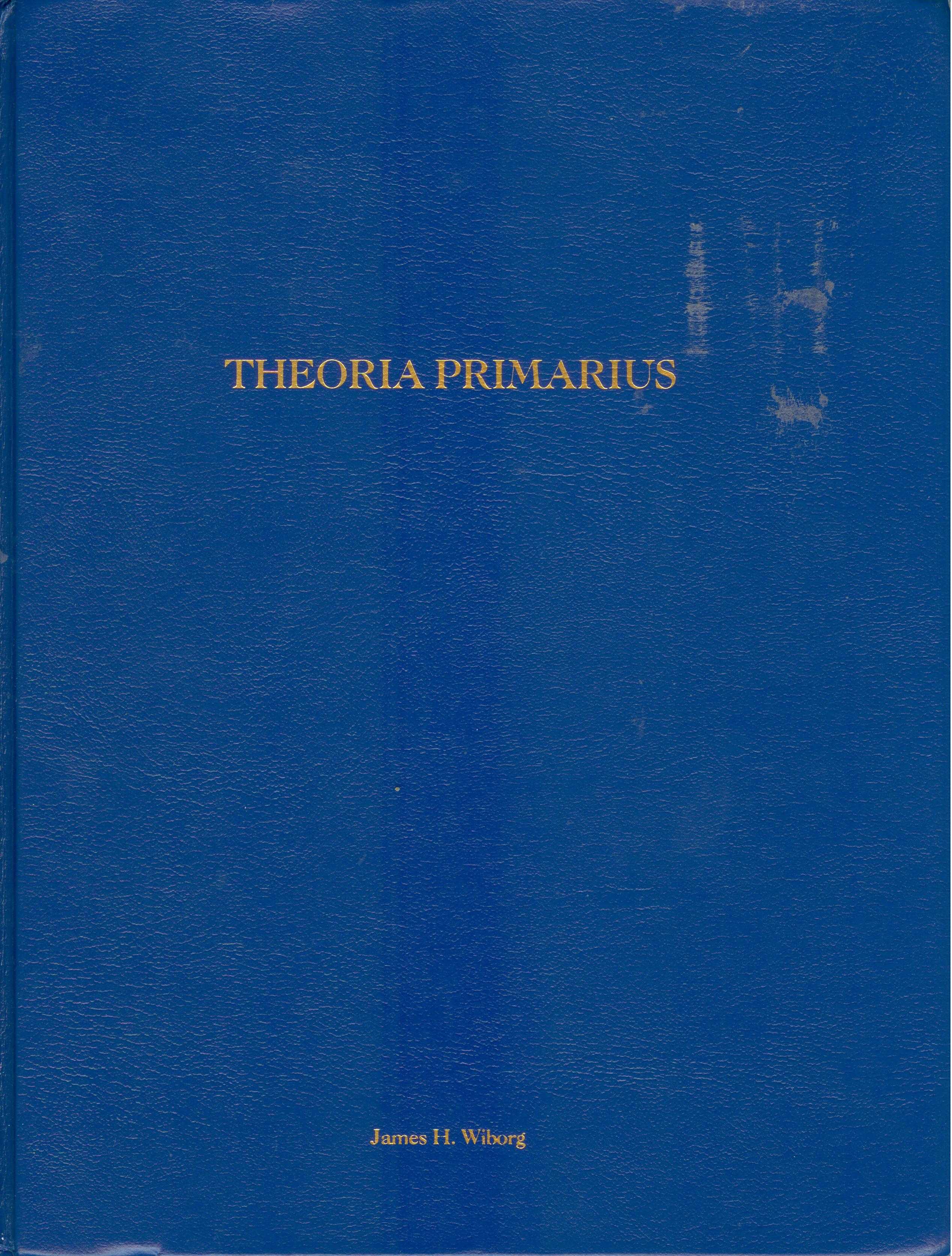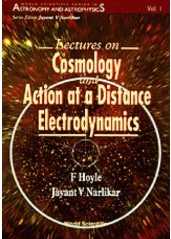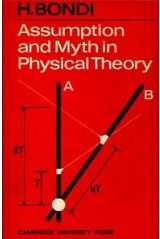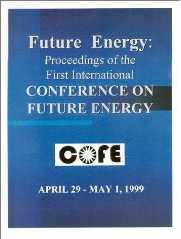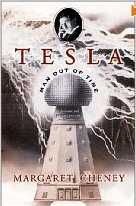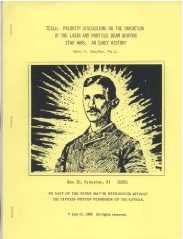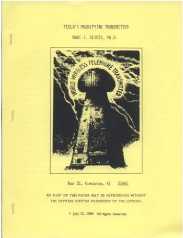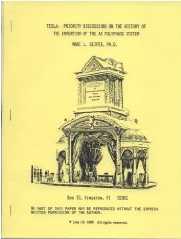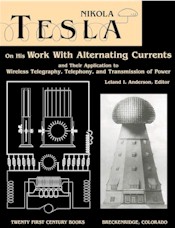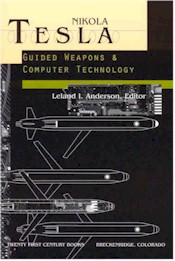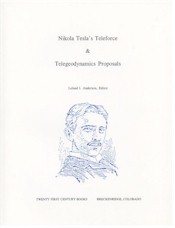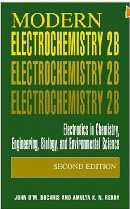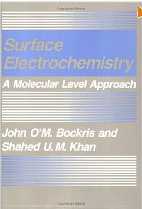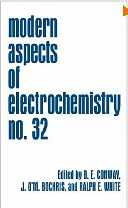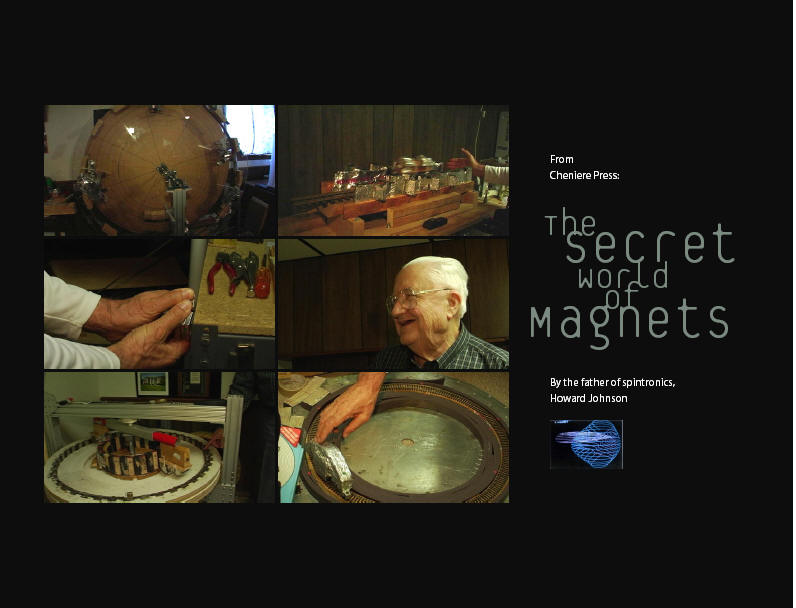View count: 1
Pages: 249
Publisher: James H. Wiborg
Year: 1992
ISBN: B0006OV784
ISBN: B001KYWMNI
ISBN: B001NJ8W0W
Pages: 53
Publisher: Vantage
Year: 1989
ISBN: 0533083346
ISBN: 978-0533083343
ISBN: B00071TNVO
Pages: 139
Publisher: World Scientific Publishing Company
Year: 1996
ISBN: 981022558X
ISBN: 978-9810225582
Pages: 96
Publisher: Cambridge University Press
Year: 1967
ISBN: 0521042828
ISBN: 978-0521042826
ISBN: B001A9AAV4
ISBN: B000ND0THS
Publisher: Cambridge University Press
Year: 1952/1960/1961
ISBN: B000WH3KWG
ISBN: B000WGW62M
ISBN: B000P7X44W
ISBN: B000Q9QYAK
ISBN: B000QA3W22
Pages: 245
Publisher: Integrity Research Institute
Year: 1999
ISBN: 0964107031
ISBN: 978-0964107038
Websites: www.integrity-research.org
Pages: 400
Publisher: Laurel Book / Touchstone
Year: 1981/2001
ISBN: 0743215362
ISBN: 978-0743215367
ISBN: 044039077X
Nikola Tesla was one of the world's greatest inventors, and definitely its most mysterious. To say that Telsa was ahead of his time is putting it rather mildly. Most of his inventions were so advanced that the public had a difficult time grasping just how important they really were.
Although Marconi is often credited with the invention of radio, the real credit goes entirely to Tesla. A long-running battle between the two ended when American courts essentially invalidated Marconi's radio patent, and awarded credit for the invention to Nikola Telsla.
In addition to radio, Tesla also invented Alternating Current (AC), which is the form of electricity used to deliver power to most homes and businesses on earth. He also patented hundreds of other inventions, many of which are in use today. Others are yet to be understood by modern scientists.
Probably just as fascinating as Tesla's inventions was Telsa himself though. He was the original, real-life "mad scientist", and often discussed his invention of the "death ray" with the popular press. The world has never seen an inventor the likes of Nikola Tesla, and may never see one again. This book is a fascinating look at an amazing individual. - William Hefner, Amazon
View count: 1
- 24: Electric Sorcerer of the Gilded Age, 216
- 25: Dematerialization Devices and Laser Beams, 222
- 26: Priority Considerations on the Development of Wireless Transmission, 230
- 36: Colorado Springs and the Magnifying Transmitter, 327
- 37: Geophysics, 340
- 38: World Broadcasting System, 346
Pages: 240
Publisher: Twenty First Century Books
Year: 2002
ISBN: 1893817016
ISBN: 978-1893817012
Websites: www.tfcbooks.com/mall/more/314ntac.htm#more-ntac
This is the transcript of an extended three day interview of Nikola Tesla conducted by his legal counsel in 1916 in preparation for expert testimony in impending radio patent cases. In an account that was never intended for publication, Tesla describes his pioneering investigations into the nature of alternating currents as applied to wireless transmission. In a style uniquely his own, he carefully traces his work from the first high frequency alternators that were constructed at his Grand Street laboratory in New York City, and their associated tuned circuits through the establishment of his huge broadcasting facility, the mighty Wardenclyffe Plant, located at Shoreham, Long Island. Among the variety of topics discussed are: high frequency alternators, experiments with wireless telegraphy and telephony, mechanical and electrical oscillators, the Colorado experiments, theory and technique of energy transmission, the Long Island plant, and arrangements for receiving. The previously untold story found within the pages of this remarkable book has been described by the prominent Tesla researcher James Corum as a "veritable Rosetta stone" for tracing the technical thoughts of one of our most distinguished engineering scientists.
TABLE OF CONTENTS:
Section
- High Frequency Alternators
- Experiments with Wireless Telegraphy and Telephony
- Mechanical and Electrical Oscillators
- Apparatus for Transformation by Condenser Discharges; Damped Waves
- Apparatus for Transformation by Condenser Discharges; Continuous Waves
- Colorado Experiments
- Theory and Technique of Energy Transmission
- Long Island Plant
- Arrangements for Receiving
- Rediscussion/Clarification of Selected Remarks
Appendix
- Fig. 1. Photograph of Tesla with alternator in offices of The Westinghouse Electric & Manufacturing Co., May 10, 1938.
- Fig. 2. Photograph of 1915 shipboard transmitter employing the Tesla spiral form of antenna transformer coil.
- Tesla's description of Long Island plant and inventory of the installation as reported in 1922 foreclosure appeal proceedings.
Pages: 260
Publisher: Twenty First Century Books
Year: 1998
ISBN: 0963601253
ISBN: 978-0963601254
ISBN: 0963601296
ISBN: 978-0963601292
Websites: www.tfcbooks.com/mall/more/337ntgw.htm
In this, the third book of the Tesla Presents Series, engineer-historian Leland Anderson provides the transcript of the 1902 U.S. Patent Interference investigation concerning Tesla's System of Signaling. The document, "Nikola Tesla vs. Reginald A. Fessenden," which is no longer on file at the U.S. Patent Office, contains Tesla's own depositions as well as those of his closest and most trusted associates, George Scherff and Fritz Lowenstein. Included is material on the history of radio-controlled devices, the first practical form of these being Tesla's radio-controlled "telautomaton" ? an operational boat first demonstrated to the public at Madison Square Garden in 1898. In addition to describing Tesla's "individualization" techniques for obtaining secure noninterferable radio communications?the patent is today recognized as the fundamental AND logic gate, a critical element of every digital computer?the interference record also reveals that essential features of the spread-spectrum telecommunications techniques known as frequency-hopping and frequency-division multiplexing have their roots in the resulting patents. Furthermore, there are new disclosures by Tesla on the operation of his large high voltage radio-frequency oscillators at both the Houston Street laboratory and the Colorado experimental station. Rarely in the history of science do we encounter such opportunities to gain deep insight into the fundamental ideas and concepts of an esteemed scientist/inventor.
TABLE OF CONTENTS:
Preface
Introduction
Nikola Tesla's technological legacy
The setting
Tesla-Fessenden U.S. Patent Office Interference Case Transcript
Remote Control and The AND Logic Gate
The beginnings of remote control
Remote-controlled devices
Tesla's wireless-controlled boats
Need for secure control
Tesla's "individualization" concept
Later contenders
Guided weapons
The AND logic gate
Electronic elements
Non-electronic elements
Fluid logic elements
Tesla turbine
High frequency, high voltage, conjoint oscillations
demonstrating the AND function
Progenitor of the computer industry
Appendix
A. U.S. Patent No. 613,809, "Method and Apparatus for Controlling Mechanism of Moving Vessel or Vehicles," Nov. 8, 1898.
B. U.S. Patent No. 645,576, "System of Transmission of Electrical Energy," Mar. 20, 1900.
C. U.S. Patents, Nos. 685,953, 685,954, 685,955, and 685,956, Nov. 5, 1901, on utilizing effects transmitted through natural media.
D. The AND logic-gate patents
U.S. Patent No. 723,188, "Method of Signaling," Mar. 17, 1903.
U.S. Patent No. 725,605, "System of Signaling," Apr. 14, 1903.
E. U.S. Patent No. 787,412, "Art of Transmitting Electrical Energy Through the Natural Mediums," Apr. 18, 1905.
F. "Inductorium"
G. Tesla correspondence with Benjamin Franklin Miessner
Afterword
Index
Pages: 124
Publisher: Twenty First Century Books
Year: 1998
ISBN: 0963601288
ISBN: 978-0963601285
Websites: www.tfcbooks.com/mall/more/381tele.htm
In the 1930s the unorthodox inventor Nikola Tesla announced to the world a pair of novel inventions. The first was "teleforce," a particle-beam projector which Tesla intended to be used as an instrument of national defense. A year later, in 1935, Tesla claimed a method of transmitting mechanical energy with minimal loss over any terrestrial distance, providing a new means of communication and a technique for the location of subterranean mineral deposits. He called this system for mechanical power transmission "telegeodynamics." Here, these two important papers, hidden for more than 60 years, are presented for the first time. The underlying principles behind teleforce and telegeodynamics are fully addressed. In addition to copies of the original documents, typed on Tesla's official stationery, this work also includes two Reader's Aid sections providing guidance through the more technical aspects of each paper. The actual texts are followed by Commentary sections which provide historical background and functional explanations of the two devices. Significant newspaper articles and headline accounts are provided to document the first mention of these proposals. A large Appendix provides a wealth of related material and background information, followed by a Bibliography section and Index.
TABLE OF CONTENTS:
Introduction
Nikola Tesla's Teleforce Proposal
Reader's Aid
New Art of Projecting Concentrated Non-Dispersive Energy Through Natural Media. By Nikola Tesla
Commentary
New York Times, September 22, 1940, "'Death Ray' for Planes"
Nikola Tesla's Telegeodynamics Proposal
Reader's Aid
Relative Merits of the Lucas Method of Prospecting by Detonations of Explosive Compounds and of The Tesla Method of Prospecting by Isochronous Oscillations Theoretically Considered. By Nikola Tesla
Tesla correspondence from George Scherff, June 17, 1937
Commentary
New York Times, July 11, 1935, "Tesla, 79, Promises to Transmit Force"
Appendix
Teleforce Proposal
Possibilities of Electrostatic Generators. By Nikola Tesla
Tesla Correspondence to J. P. Morgan, Jr., November 29, 1934
Telegeodynamics Proposal
Tesla correspondence from George Scherff, April 19, 1918
Address Before The New York Electrical Society, "Mechanical and Electrical Oscillators" by Nikola Tesla
Electric Generator ? U.S. Patent No. 511,916
Reciprocating Engine ? U.S. Patent No. 514,169
Steam Engine ? U.S. Patent No. 517,900
Mechanical Therapy by Nikola Tesla
Detroit Free Press, Jan. 18, 1896, "Tesla's Health Giver"
Bibliography
Teleforce
Telegeodynamics
Afterword
View count: 1
Publisher: Bharatiya Vidya Bhavan
Year: 1996
ISBN: 8172760701
ISBN: 978-8172760700
Extract:
What is the reality of the universe? This question should be first answered before the concept of God can be analysed. Science is still in search of the basic entity that constucts the cosmos. God, therefore, will be a system too complex for science to discover. Unless the basic reality of aakaash (space) is recognized, neither science nor spirituality can have a grasp of the Creator, Sustainer and Destroyer of this gigantic phenomena that the Vedas named as Brahman.
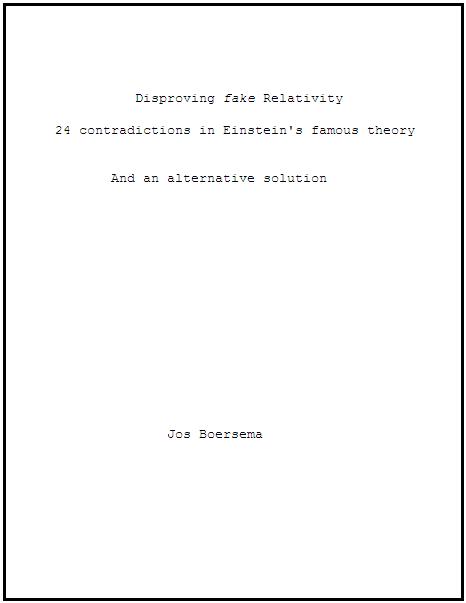
View count: 1
Pages: 542
Publisher: Springer
Year: 1970/2001/2008 (pb)
ISBN: 0306463253
ISBN: 978-0306463259
Chapter 10 starts with a detailed description of what happens when light strikes semi-conductor electrodes and splits water, thus providing in hydrogen a clean fuel. There have of course been revolutionary advances here since the First Edition was written. The book also discusses electrochemical methods that may provide the most economical path to many new syntheses - for example, the synthesis of the textile, nylon. The broad area of the breakdown of material in moist air, and its electrochemistry is taken up in the substantial Chapter 12. Another exciting topic covered is the evolution of energy conversion and storage which lie at the cutting edge of clean automobile development. Chapter 14 presents from a fresh perspective a discussion of electrochemical mechanisms in Biology, and Chapter 15 shows how new electrochemical approaches may potentially alleviate many environmental problems.
Pages: 1046
Publisher: Springer
Year: 1993
ISBN: 0306443392
ISBN: 978-0306443398
ISBN: 0306442981
ISBN: 978-0306442988
Topics discussed include:
- A thorough and mathematical treatment of periodic phenomena, with consideration of new theories about the transition between `order' and `chaos';
- Impedance spectroscopy as applied to the study of kinetics and mechanisms of electrode processes;
- The use of stoichiometric numbers in mechanism analysis;
- The electro-osmotic dewatering of clays with important implications for the processing of industrial waste and geotechnical; stabilization;
- Magnetic effects in electrolytic processes and the electrolytic Hall effect; and
- The computer analysis and modeling of mass transfer and fluid flow.
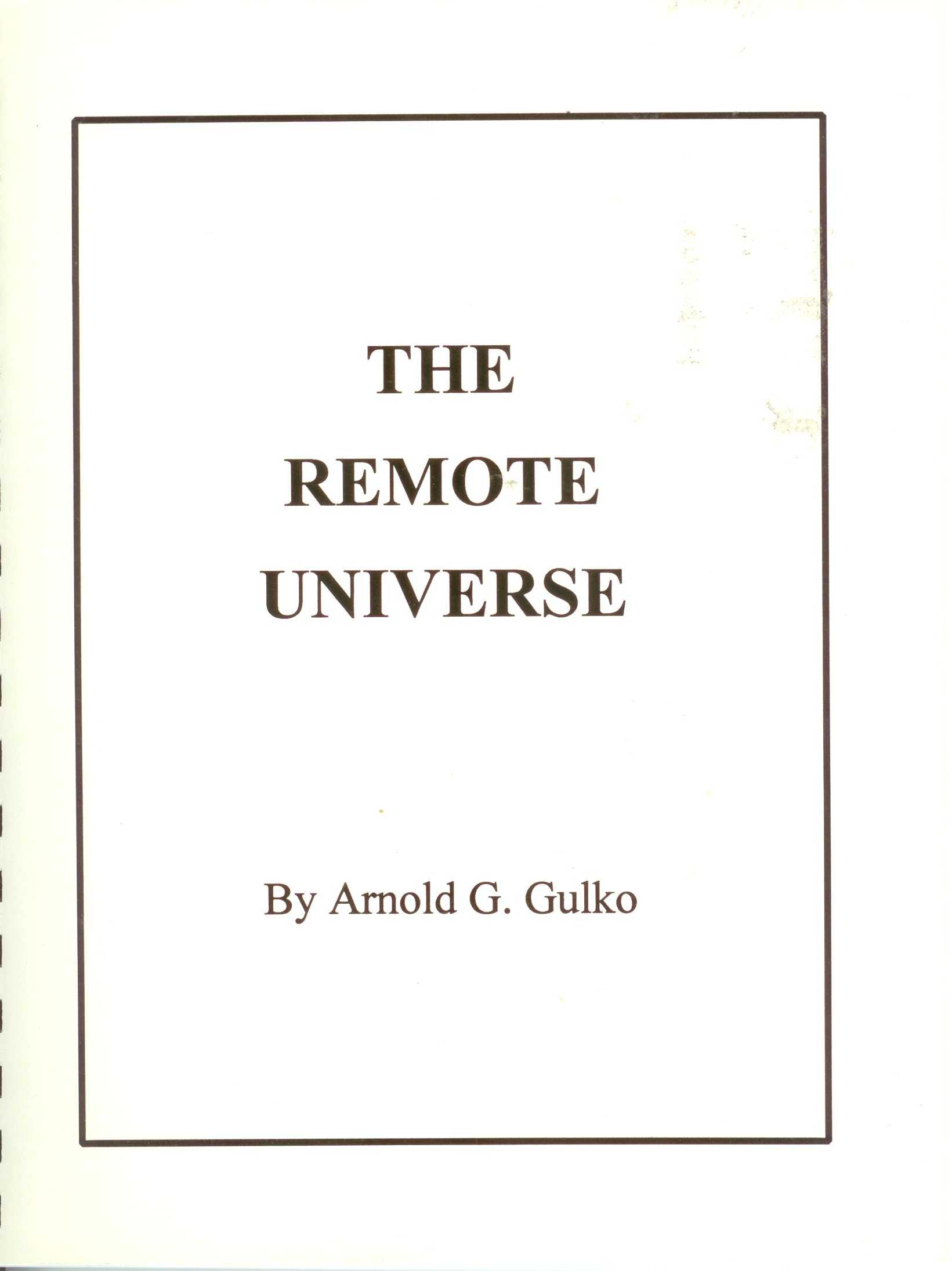
View count: 1
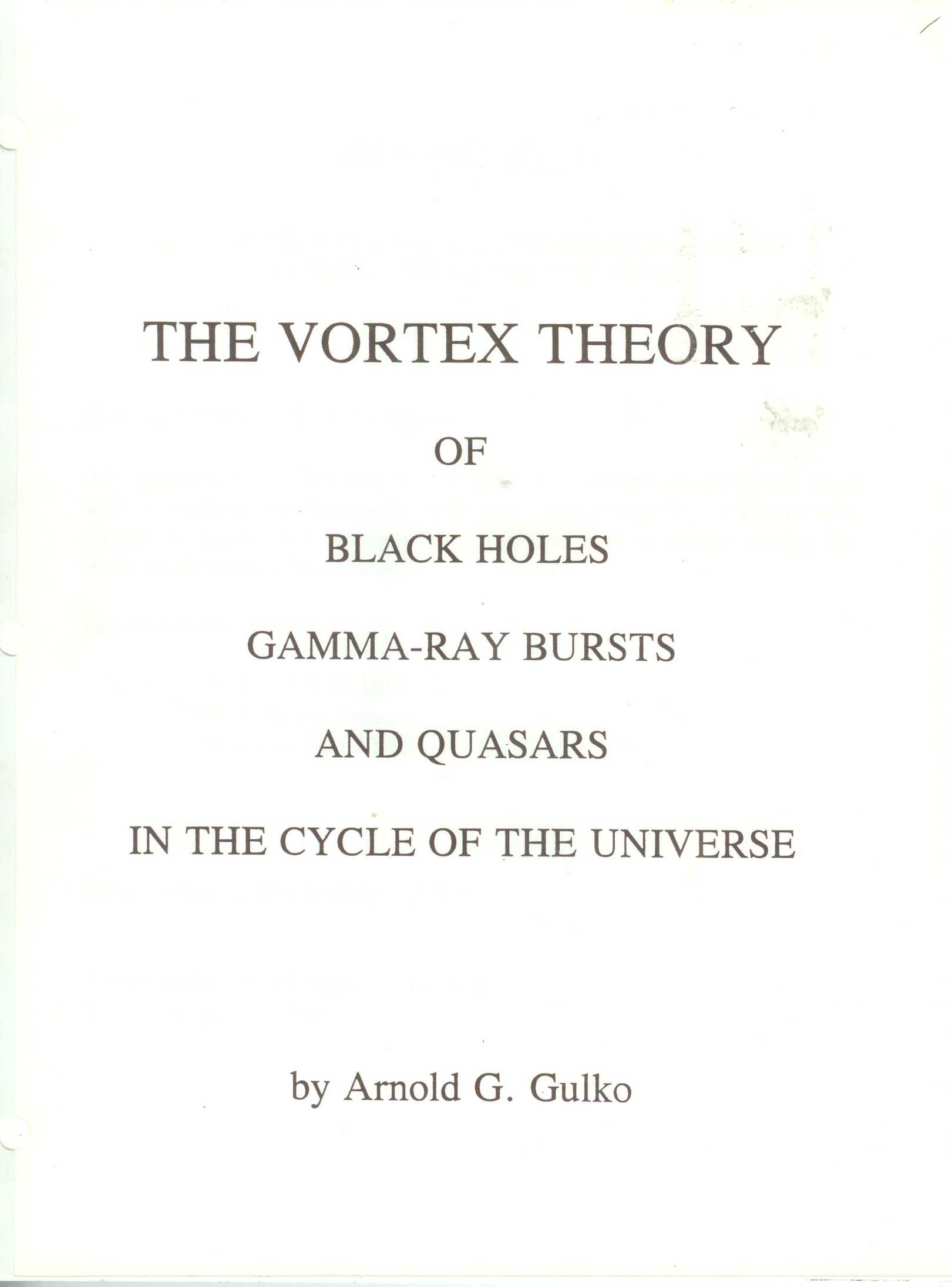
View count: 1
